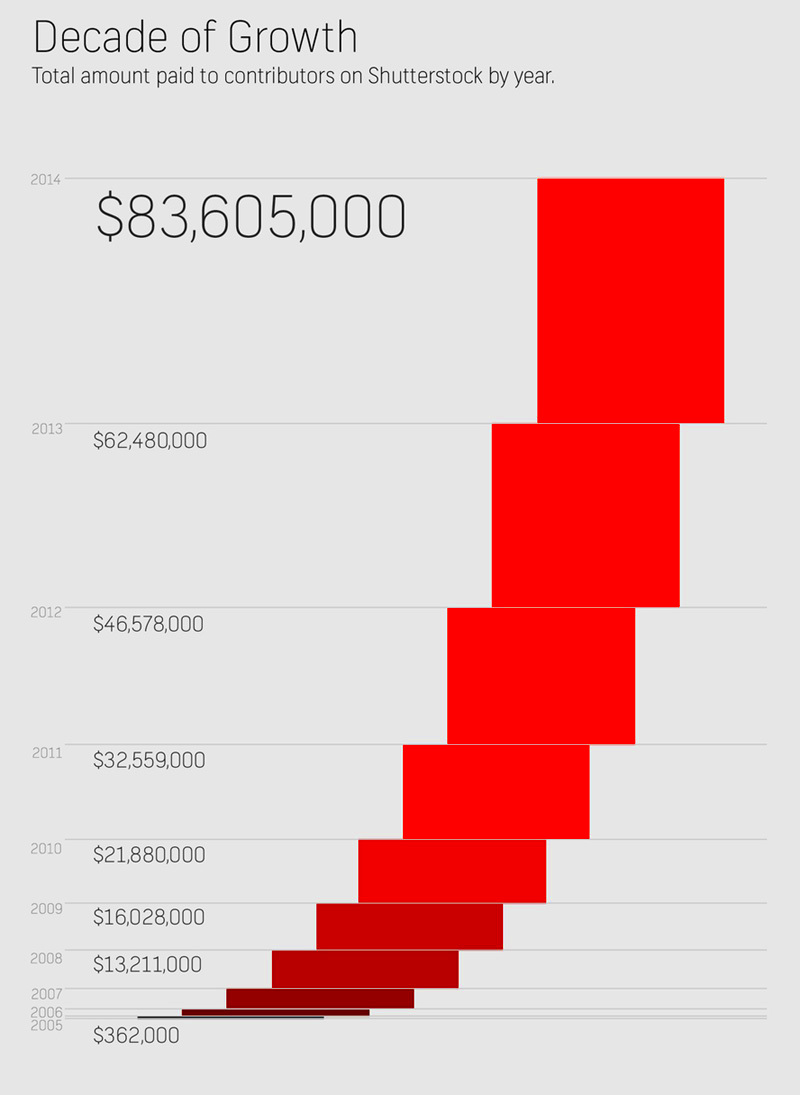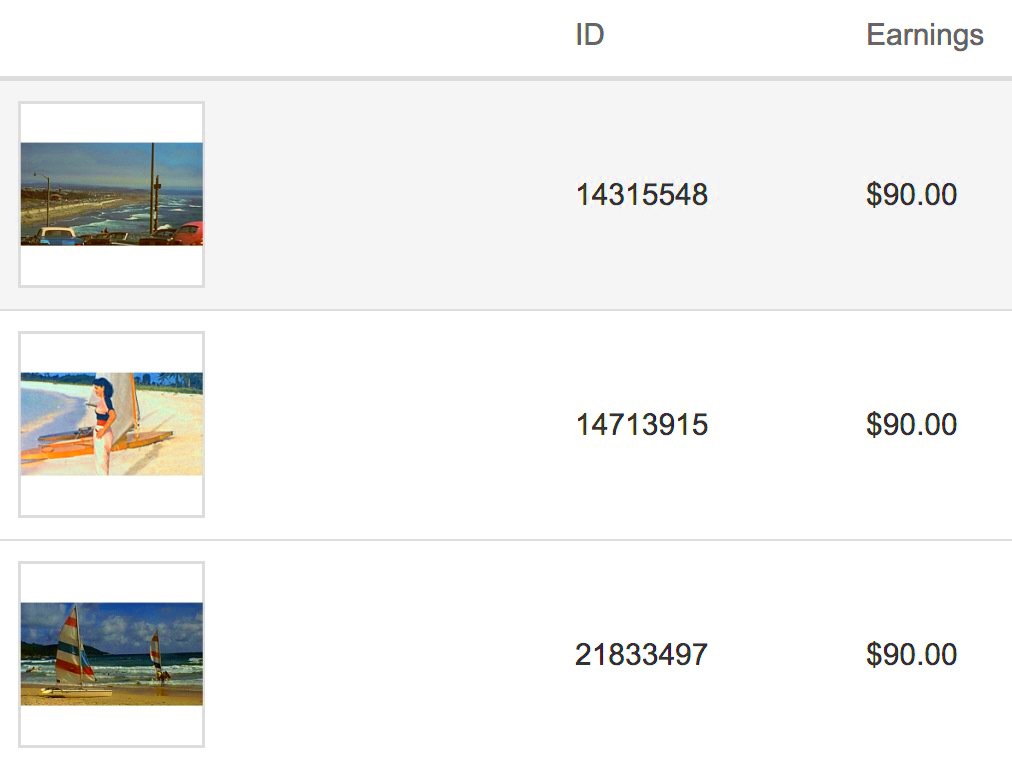Shutterstock is one of the most popular platforms for selling digital content. If you're a photographer, illustrator, or musician, you can upload your work and earn money each time someone downloads it. The platform provides a great opportunity for creators to turn their talent into a source of income. However, knowing how Shutterstock works and what affects your earnings is key to making the most of your contributions.
What Determines Your Earnings on Shutterstock?

Your earnings on Shutterstock depend on several factors. These include the number of downloads, the type of license purchased, and your contributor level. Here's a breakdown of the main things that affect your income:
- Download Volume: The more people download your content, the more money you can make.
- License Type: Shutterstock offers different licensing options, such as standard, enhanced, and custom licenses. Enhanced licenses, for example, usually pay more.
- Contributor Level: Shutterstock uses a tier system based on the total number of downloads. Higher tiers give you a larger percentage of each sale.
- Referral Programs: If you bring new customers or contributors to Shutterstock, you can earn a commission.
The platform uses a revenue-sharing model where you receive a portion of the money Shutterstock makes from selling your content. It's important to familiarize yourself with their payment structure to maximize your earnings.
Also Read This: Create a Paper Box Easily with Video Tutorials on Dailymotion
Types of Content That Perform Well
Not all content on Shutterstock earns equally. Some categories are in higher demand than others. Knowing what buyers are looking for can help you focus on the right type of content. Here are some of the top-performing content types:
- Stock Photos: High-quality, versatile images that can be used across various industries. Popular themes include business, lifestyle, nature, and technology.
- Vectors and Illustrations: Graphic designs and vector images often perform well, especially when related to web design or digital marketing.
- Music and Sound Effects: Background music, loops, and sound effects are often sought by video producers, marketers, and content creators.
- Videos: Short, high-quality clips of everyday activities, nature, or time-lapse videos are popular with brands and marketers.
Keeping an eye on trends and paying attention to what buyers are purchasing can guide you in creating content that sells better. Adapt to changes in the market to stay competitive.
Also Read This: How to Download Projects from Behance
How Payment Structures Work for Contributors
Understanding how Shutterstock pays its contributors is essential if you want to make a steady income. The platform uses a royalty system, meaning you earn a percentage of each sale rather than a flat rate. How much you make depends on several factors, including your contributor level and the type of license buyers choose when downloading your content.
Here’s a breakdown of the main elements of Shutterstock’s payment structure:
- Contributor Levels: Shutterstock has a tiered payment system based on the number of lifetime downloads you have. The more downloads, the higher your tier, and the larger percentage you earn. There are typically four levels, with earnings increasing as you progress.
- Royalty Rates: Royalties range from 15% to 40%, depending on your contributor level. As you hit higher download milestones, Shutterstock will increase your royalty rate.
- License Type: Shutterstock offers different licenses (standard, enhanced, etc.). For example, enhanced licenses pay more since they allow for broader use of the content, like in merchandising.
- Payout Threshold: You can withdraw your earnings once they reach a minimum threshold of $35. Shutterstock offers payment through PayPal, Skrill, or bank transfer.
It's helpful to familiarize yourself with Shutterstock's payment policies and structure to better predict your potential income. Knowing the payout schedule and methods helps you plan how often you can expect to get paid.
Also Read This: Exploring Additional YouTube Features and Their Uses
Ways to Boost Your Shutterstock Income
If you're looking to make more money on Shutterstock, there are some strategies you can use to boost your income. Simply uploading content and hoping for the best isn’t enough. You’ll need to be proactive about growing your earnings over time.
Here are some key tips for increasing your Shutterstock income:
- Upload Consistently: Regular uploads keep your portfolio fresh and increase the chances of your content being discovered. Contributors who post new content frequently tend to have higher download rates.
- Focus on Quality: High-quality images, videos, and music are more likely to get purchased. Make sure your content is sharp, well-composed, and relevant to current trends.
- Use Relevant Keywords: Properly tagging your content with relevant keywords helps potential buyers find your work. Think about the terms someone might search for when looking for your type of content.
- Keep Up with Trends: Popular categories and themes can shift based on global events, trends, or seasons. Pay attention to what’s trending in the market to create timely and in-demand content.
- Expand Your Portfolio: Diversifying your portfolio by adding different types of content (like videos, music, or illustrations) can open up new income streams.
By combining these strategies, you can improve your visibility and earnings on the platform over time. It's all about being consistent, adapting to market needs, and producing high-quality work.
Also Read This: How to Add Vast Ads to Dailymotion Videos and Monetize Your Content
Tracking Your Performance on Shutterstock
Keeping track of how your content is performing on Shutterstock is key to understanding what works and what doesn't. Shutterstock offers a range of tools to help you monitor your progress, giving you valuable insights into which of your files are performing the best and how you can improve your overall sales.
Here’s how you can track your performance effectively:
- Analytics Dashboard: Shutterstock provides contributors with a dashboard where you can see your download numbers, earnings, and top-performing content. This can help you spot trends in what buyers are looking for.
- Download Patterns: Keep an eye on which days or seasons bring in more downloads. This can help you plan your content creation around busy periods.
- Top-Selling Content: Your dashboard highlights your most downloaded items. Studying these can help you create more content similar to what’s already performing well.
- Keyword Analysis: Check which keywords are leading buyers to your content. You might find that certain tags perform better than others, allowing you to fine-tune your future uploads.
By using these tools, you can adapt your strategy and focus on what’s working best for your audience. Regularly checking your performance data ensures that you're always on top of your Shutterstock game, helping you adjust your approach and maximize your earnings.
Also Read This: Tips for Enhancing Video Quality on the Dailymotion App
Frequently Asked Questions About Shutterstock Earnings
Many new contributors have questions about how Shutterstock earnings work. Here are some of the most common queries and their answers to help you get a better understanding of the platform's payment system.
- How much can I earn on Shutterstock?Your earnings depend on the number of downloads and the type of license purchased. On average, contributors earn between $0.10 and $5 per download for standard licenses, but earnings can be higher for enhanced licenses or custom sales.
- When do I get paid?Shutterstock issues payments once your earnings reach the minimum threshold of $35. Payments are processed monthly and can be received via PayPal, Skrill, or direct bank transfer.
- Can I increase my royalty rate?Yes, Shutterstock operates on a tiered system. As your total lifetime downloads increase, so does your royalty percentage. New contributors start at 15%, but you can move up to 40% as your download numbers grow.
- What type of content earns the most?Content that’s in high demand, such as business images, technology-related vectors, and videos, tends to perform better. However, it all depends on quality and relevance to buyers' needs.
- Does Shutterstock have a referral program?Yes, you can earn commissions by referring new customers or contributors to Shutterstock. You will receive a percentage of their earnings or purchases for a limited time.
Final Thoughts on Maximizing Your Shutterstock Revenue
Making a consistent income on Shutterstock takes time, but by focusing on quality content, staying informed about market trends, and using the tools available to track your performance, you can gradually increase your earnings. Be patient, upload regularly, and continuously refine your strategy for the best results.
